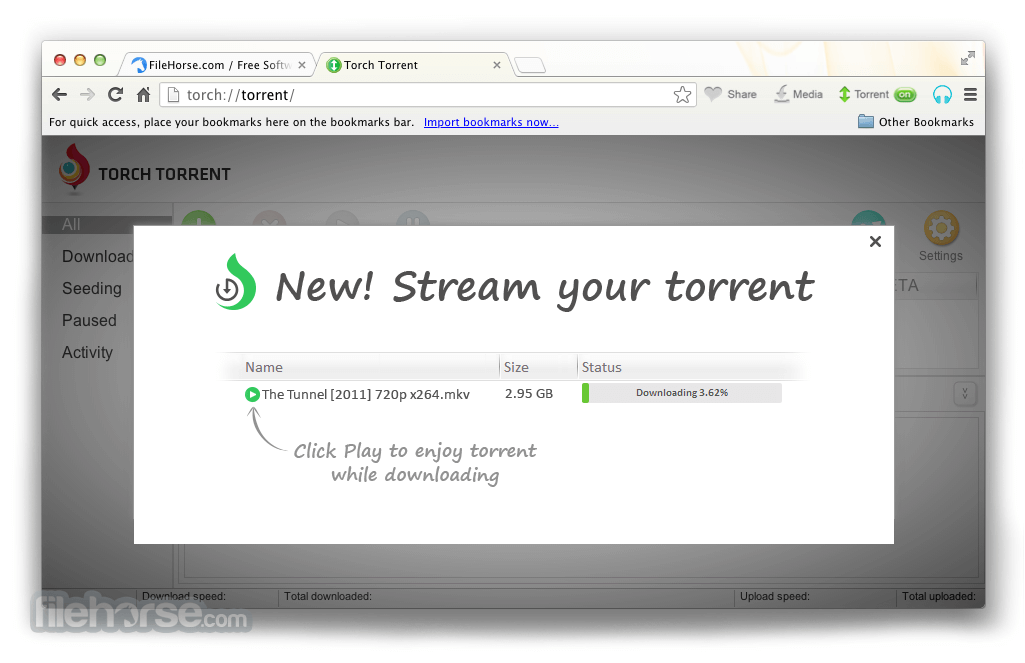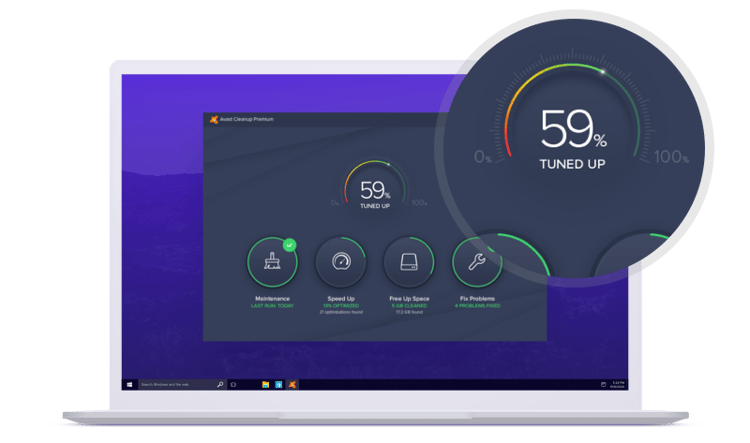Browser Cleaner For Mac
Browser hijackers have become one of the most common types of malware on the Mac. Whether you use Safari, Chrome, Firefox, or another browser entirely, you’re at risk of browser hijacking. Here, we’ll tell you how you can tell if your browser has been hijacked and how to remove the culprit.
Optimize your Apple computer and clean up your browser’s cache of cookies and unneeded temporary files with Avast Cleanup for Mac. Clean up invisible cache files and other junk and unused data and get your phone running up to 20% faster with Avast Cleanup for Android. Download Avast Cleanup. As a recently converted mac user I am interested to see if there is a Mac equivalent to pc's 'disk cleanup' and a defragger. I know mac's are far more robust than pc's but they surely need a clean every so often. I have seen many apps such as Mac Keeper, Mac Cleanse, CleanMyMac and more. Which is the best?
Browser cleaner free download - Tor Browser, Torch Browser, Mountain Lion Cache Cleaner, and many more programs. Optimize your Mac for better performance. Free Editors' rating. Click&Clean is an innovative and totally free solution for your PC, Mac or Chromebook, that will help you to: - Scan your PC for Malware - Delete your browsing history - Remove download history - Erase temporary files - Clear cookies - Empty cache - Delete client-side Web SQL Databases - Remove Flash Cookies (LSOs) - Protect your privacy by cleaning up all traces of your internet activity.

What is browser hijacking?
It’s a type of malware that once it has been downloaded and installed, takes control of your web browser. Typically, it will change your homepage to one that the hacker wants you to visit, and change your default search engine to one that allows the hacker to monitor your searches and clicks.
That information will then be used to display adverts. Some browser hijacking also involves installing toolbars that claim to find discounts or offer coupons for online shopping sites. In reality, this is adware, designed to get you to click on a link that will take you to a suspicious website in order to increase its advertising revenue.
Hijackers may also download files to your Mac that monitor your activity or steal data. For example, your Mac may get infected with a software keylogger that can record your banking and e-mail authentication information.
Well-known examples
There are a number of hijackers that have become well-known because they are so widespread. Bbd movie. You might have heard of some of them. Many of them have names that make them sound like search or shopping extensions.

- Pitch of Case
- Search Quick
- Time Search Now
- Booking app
- Fuq.com
All of these hijackers sneak onto your Mac by bundling themselves with apparently legitimate applications or disguising themselves as updates, for example to Flash Player. And they all intercept your browser’s homepage and default search engine and change it to wherever the hacker wants you to go.
macOS’ GateKeeper feature safeguards your Mac and checks the apps you’re about to download. It approves apps that are already on the App Store or those whose code is signed by an authorized developer.
To install anything else the GateKeeper doesn’t advise, you need to confirm the download. Code-signed apps must also be notarized by Apple – that means they are checked for malware, among other things – in order to get past GateKeeper. CleanMyMac X is one such notarized app, meaning it has been approved by Apple.
How can I tell if my browser has been hijacked?
There are a number of possible symptoms:
- Has your browser’s homepage changed without you changing it?
- Have you started seeing lots of adverts you wouldn’t normally see?
- Has your default search engine changed?
- Is your browser running more slowly than usual or behaving erratically?

If the answer to any of those questions is ‘yes’, it’s likely your browser has been hijacked.
How can I avoid being hijacked?
Hijackers find their way onto your Mac using a number of different techniques. However, in each case, they are downloaded after an action initiated by the user, such as clicking a link in a phishing email or on a questionable website.
- Don’t click on any link in an email or instant message unless you are certain where it leads.
- Don’t respond to pop-up adverts that claim a component, like Flash Player, is out of date, or that your system needs to be repaired.
- Avoid downloading apps from free. software download sites that use their own proprietary download manager.
- Keep your OS and all your apps up to date – CleanMyMac X has an updater that scans apps installed on your Mac, checks for updates, and then allows you to update all those that have new versions available.
How to remove browser malware on Mac
There are two ways to remove hijackers – the manual, tiresome, way or the automatic, fast method.
To remove browser hijackers in Safari manually:
- In Safari, click on the Safari menu and choose Preferences.
- Select the Extensions tab and look for any extensions you don’t recognize.
- If you find one, click on it and press Uninstall.
- Now, choose the General tab and set your homepage to your preferred start page.
- Finally, select the Search tab and choose the search engine you want to use.
Browser Cleaner For Mac Os
To delete browser hijackers in Chrome:
- Launch Chrome and type the following in the address bar:
chrome://extensions - Look for any extensions you don’t recognize.
- If you see one, press Remove next to it.
- Now, paste this in the address bar:
chrome://settings - Scroll down to “On startup” and decide what page do you want to see at the start of your browser.
- In the “Search engine” section, choose a default search engine.
Firefox:
- Launch Firefox and enter this command in the address bar:
about:addons - Choose “Extensions”.
- Look for any extensions that seem suspicious.
- If you find one, click the ellipsis (3-dot) next to an extension and click Remove.
- Then, go to
about:preferences - In the Home section, set your homepage.
- In Search, set your default search engine.
Browser hijacker removal the easy way
The easiest method and the one we recommend is to use CleanMyMac X, which has a tool for deleting Extensions.
- Download, install and launch CleanMyMac X.
- Choose Extensions in the sidebar.
- Click on a browser, and check the box next to the extensions you want to delete.
- Press Remove.
CleanMyMac X also has a tool that allows you to clear browser caches. You should certainly do that if you have had malware in your browser.
- In CleanMyMac X, choose the Privacy module.
- Press Scan.
- When it’s finished, check the box next to your browser in the main window.
- Press Remove.
The browser hijacker is a common type of malware that typically comes bundled with apps downloaded in download managers from free software sites. Once installed, they change the homepage and default search engine for your browser in order to direct you to pages that display adverts. They may also steal data. Fortunately, with the help of CleanMyMac X, they are fairly easy to remove.

You may want to clear Safari history, cache, and website data on Mac to prevent others from seeing what you were browsing. Removing these helps make the browser responsive. It also comes handy when Safari lags or takes ages to load webpages. The steps to delete website data of Safari in macOS is easy. Let us see how.
Consequences of Clearing Safari History and Website Data
- Records of visited webpages are deleted
- A list of the frequently visited sites is also cleared
- It may reduce tracking by websites. (a good thing)
- You may be logged out of websites
- Records of blocked or allowed location access, notification, etc. are also reset. So, if you visit a website, it will again ask your permission for these
- The download list is deleted. (Actual downloaded files are not.)
- If you have several Apple devices that sync via iCloud, the changes will reflect on all
How Clear Safari History on Mac
You can choose to clear all history in few clicks. Or choose to delete them date-wise or by specific pages. Download jpg to word converter onlineunbound. Let me show you how.
- Open Safari.
- Click on History from the top menu bar
- Click on Clear History.
- Dropdown menu will show all history. Click on it if you want to select another option, like the last hour, today, today, and yesterday
- Finally, click on Clear History.
How to Delete Specific Webpage from Safari History on Mac
- Open Safari.
- From the top menu bar, click on History.
- Click on Show All History.
- You will see Last Visited Today and other dates. Right-click on one and then choose Delete.
- Or, click on the tiny triangle arrow ▶ to expand. Next, right-click on an individual page and choose Delete.
How to Clear Safari Cache on Mac
Cache is like a snapshot of the webpage. When you revisit the same page, your browser loads this stored snapshot (or parts of it) first, instead of fetching it again from the internet. It ensures you have a fast experience.

However, too many cache files may make your overall browser slow. Sometimes, it may serve you an un-updated version of a webpage. To fix such problems, you may need to clear the cache at regular intervals. Here is how to do that for Safari in macOS.
- Open Safari.
- Click on Safari next to the Apple logo
- Click on Preferences.
- Click on Advanced.
- Check the box for Show Develop menu in menu bar.
- Now click on Develop from the top
- Finally, click on Empty Caches.
Though you won’t see any confirmation or pop-up, the cache clearing process was successfully initiated and completed in the background.
How to Clear Safari Cookies on Mac
Cookies are tiny data packets that a website saves on your device. It helps the site know that you are revisiting it. (If this is your first visit to iGeeksBlog, you might have seen a black banner at the bottom asking for your cookie consent.)
Download android apps to pc converter for windows sarah smith wedding. When you clear history and website data, cookies are also deleted. However, here is how to remove cookies (cache, etc. too) individually. And even block them.
- Open Safari.
- Click on Safari from the top menu bar
- Click on Preferences.
- Click on Privacy.
- Check the box for Block all cookies. Next, click on Block All. This will disable them for all future websites. Existing cookies and website data will be removed, as well. However, blocking cookies may give a bad browsing experience, and some sites might not load or function properly.
- To delete individual cookies, click on Manage Website Data.
- Next, click on a website and then click on Remove.
- At last, click on Done.
Signing off…
This is how you can clear up Safari on Mac. After this, when you use this browser again, it will recreate all these files for the websites you visit.
Next, you may learn how to clear cache, history, website data on iPhone or iPad.
I have been an Apple user for over seven years now. At iGeeksBlog, I love creating how-tos and troubleshooting guides that help people do more with their iPhone, iPad, Mac, AirPods, and Apple Watch. In my free time, I like to watch stand up comedy videos, tech documentaries, news debates, and political speeches.
Best Browser Cleaner For Mac
- https://www.igeeksblog.com/author/ankur/How to Turn ON or OFF Facebook Nearby Friends on iPhone
- https://www.igeeksblog.com/author/ankur/How to Reset Hosts File to Default on Mac and Windows PC
- https://www.igeeksblog.com/author/ankur/
- https://www.igeeksblog.com/author/ankur/How to Turn off Unread Mail Count in Mail App on iPhone
